Phenix Marble and Walnut Grove
Codiak San Herrell
Photos by Codiak Herrell
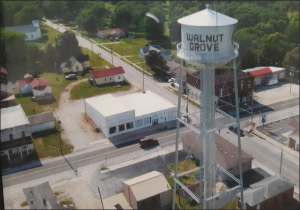 |
|
Walnut Grove has many historical ties to the nearby Phenix Marble quarry. |
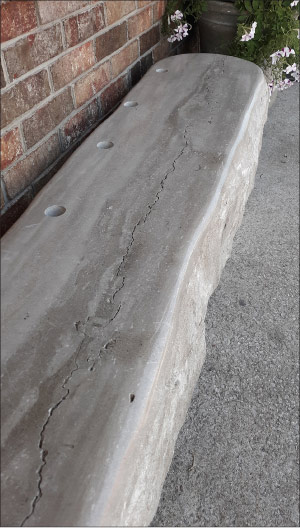 |
|
This public bench outside a Walnut Grove gas station is a solid block of Napoleon cut stone from the Phenix quarry, and a reminder of the impact the quarry had on the community. |
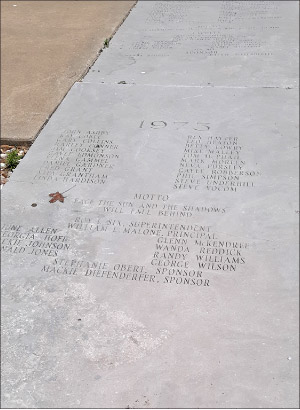 |
|
Laid as a pavement in front of the high school, engraved slabs of Fleuri cut Phenix marble record decades of senior grads, teachers and sponsors. |
In 1888, a major limestone deposit was discovered during the construction of the Kansas City, Clinton and Springfield railroad, near the town of Phenix, Missouri.
By 1905, Phenix had become a major stone producer, supplying major building projects in the United States and Canada, and shipping more than 250,000 cubic feet annually… right up until the Great Depression laid the U.S. economy low.
After unsuccessful runs with ownership by the Vermont Marble Company, and then being marketed as Carthage Stone, the Phenix quarry site was eventually sold and improved thanks to a man named Dave Richter in the 1970s.
In the mid-1990s, Freddie Flores began working with some of the remaining stone blocks from past quarrying efforts, and did a lot of promotional work for Phenix Marble, including talks at the MSU Campus, and being a speaker and presenter at the local Home Builders Association.
When I spoke with him, Flores also mentioned the additional business and interest they generated by setting up a Phenix consignment table at local galleries, which led to new residential jobs.
Today, the town of Phenix is very much reduced in population, but the quarry remains very active, and once again is flourishing.
Nearby, the small town of Walnut Grove, Missouri, was already established in 1866.
It is located just a few miles from the historic Phenix Marble site.
With such a busy company as a neighbor, as well as being a great area for farming, the small town flourished.
Walnut Grove boasted a population of approximately 800 people before the Great Depression took its toll in the 1930s.
Today, you can still see the impact the nearby limestone/granite quarry had on the town. There are many physical reminders, and a rich, pre-Depression history of the quarry and town.
For example, the local gas station is the proud owner of solid blocks of Napoleon cut Phenix Marble stone benches outside their doors.
A Civil War-era cemetery is located in town, where headstones from the Phenix quarry predominate. And for many years, the Walnut Grove high school has had a tradition of engraving the names of each year’s graduating class, as well as teachers and the principal, on a slab of Phenix Marble.
The engraved slabs are laid with pride as a sidewalk around the high school, for the use of current and future generations.
While walking around town, I met Walnut Grove resident Darell Stepp, who recalled his 1959 graduating class personally going and picking out their memorial slab from the then-called Phenix Stone and Lime Company.
The high school seniors took the heavy slab to be engraved before delivering it to its home at the Walnut Grove High School.
Also part of Phenix Marble’s legacy and impact in the area is 154.5 acres of preserved cropland, home to numerous wildlife species, and an old-growth mixed hardwood plantation.
Walnut Grove shares this natural resource and hunting and fishing spot with the neighboring town of Ash Grove. The land abuts the Phenix Marble quarry, and was once owned by the company.
It is now in the public trust and is known as the Phenix Access.
Today, Walnut Grove does not flourish quite like it did in the early 1900s; its population has taken a dip.
Even though the Phenix Quarry is once again a successfully running operation, workers nowadays have better means of transportation than they did pre-Great Depression, and workers can commute from diverse, more distant places.
In Walnut Grove, the long association with nearby Phenix Marble has left a rich history.
If you ever have a chance to visit this pleasant place, keep your eye out for the historical Fleuri or Napoleon cut Phenix.
A walk around this lovely small town will reveal a thousand stories, just waiting to be told by friendly residents like Mr. Stepp.
For more information, visit the website phenixmarble.com/overview
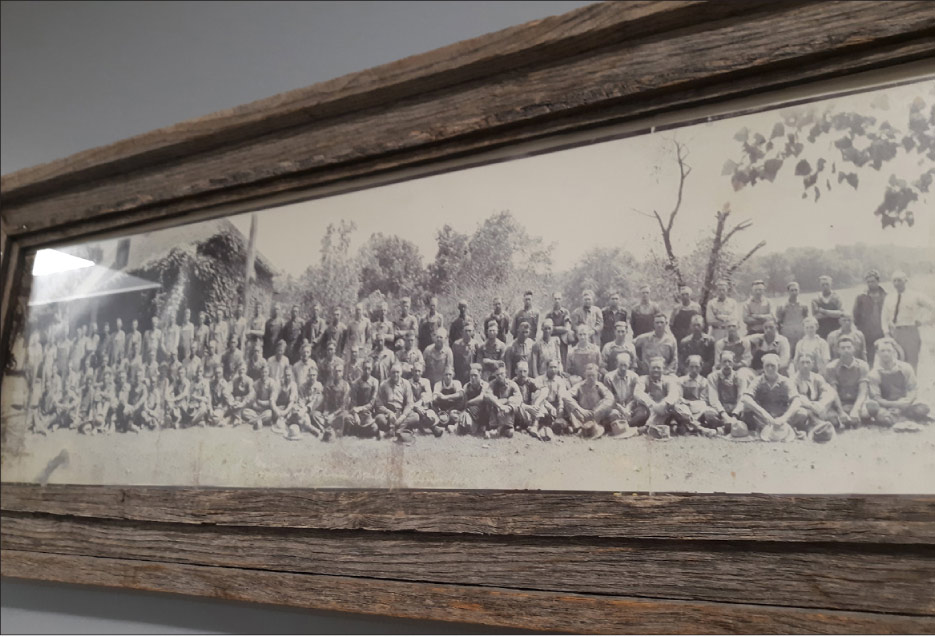 |
|
Above: This group portrait from the 1940s hangs in the Walnut Grove City Hall, and is a good example of the many workers from nearby towns that Phenix Marble employed in the past century. Phenix Marble has been a good neighbor to the area, in more ways than one. |
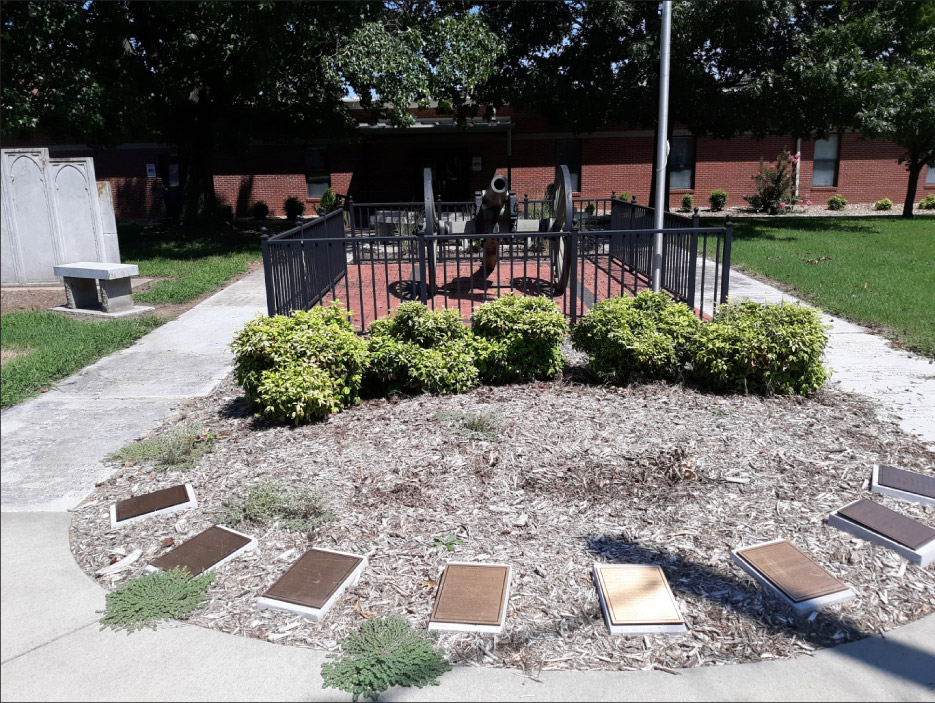 |
|
Above: War Memorial at Walnut Grove High School, with engraved Phenix paving slats installe on both sides of a Civil War-era cannon, and Phenix benches and stone partitions. |